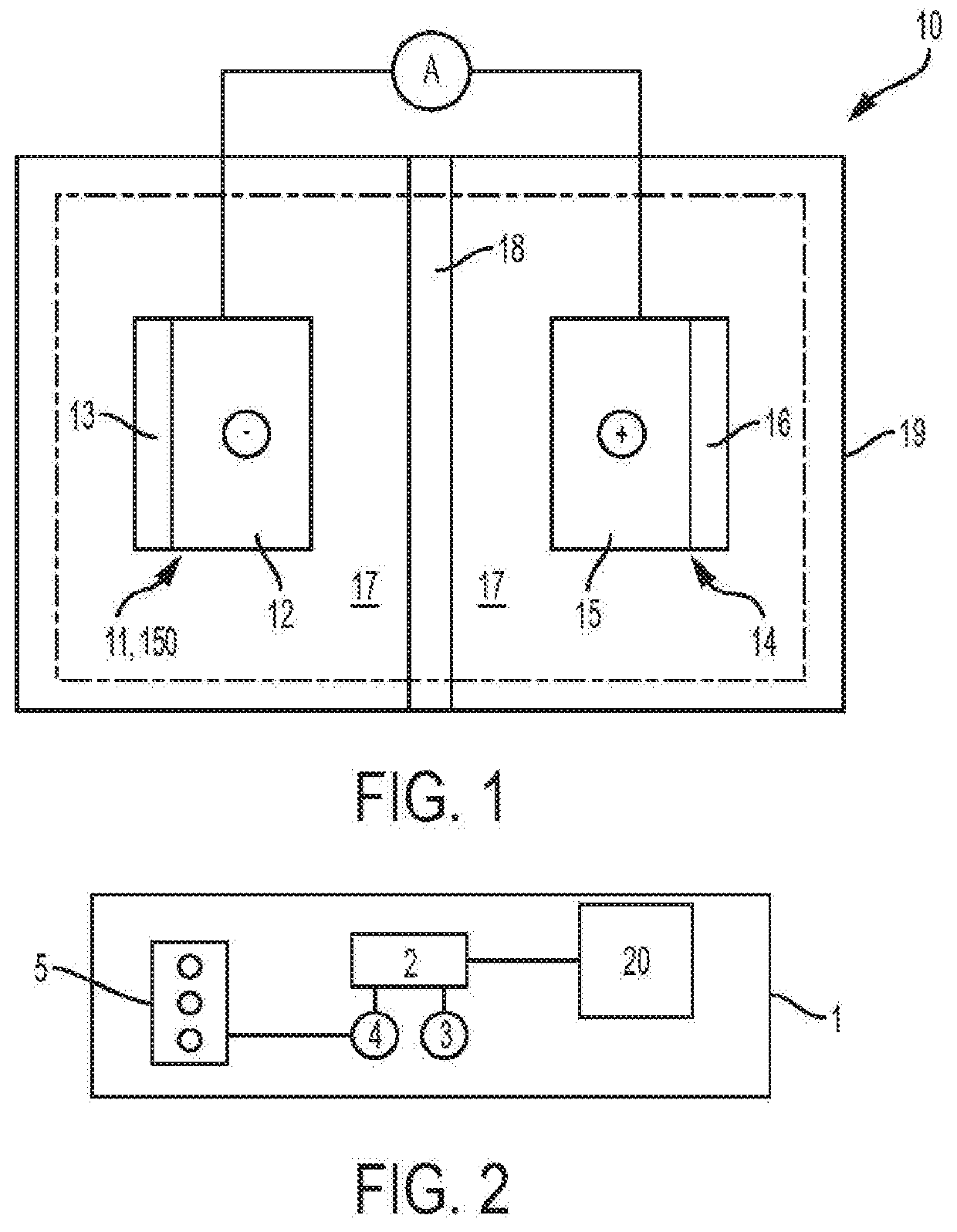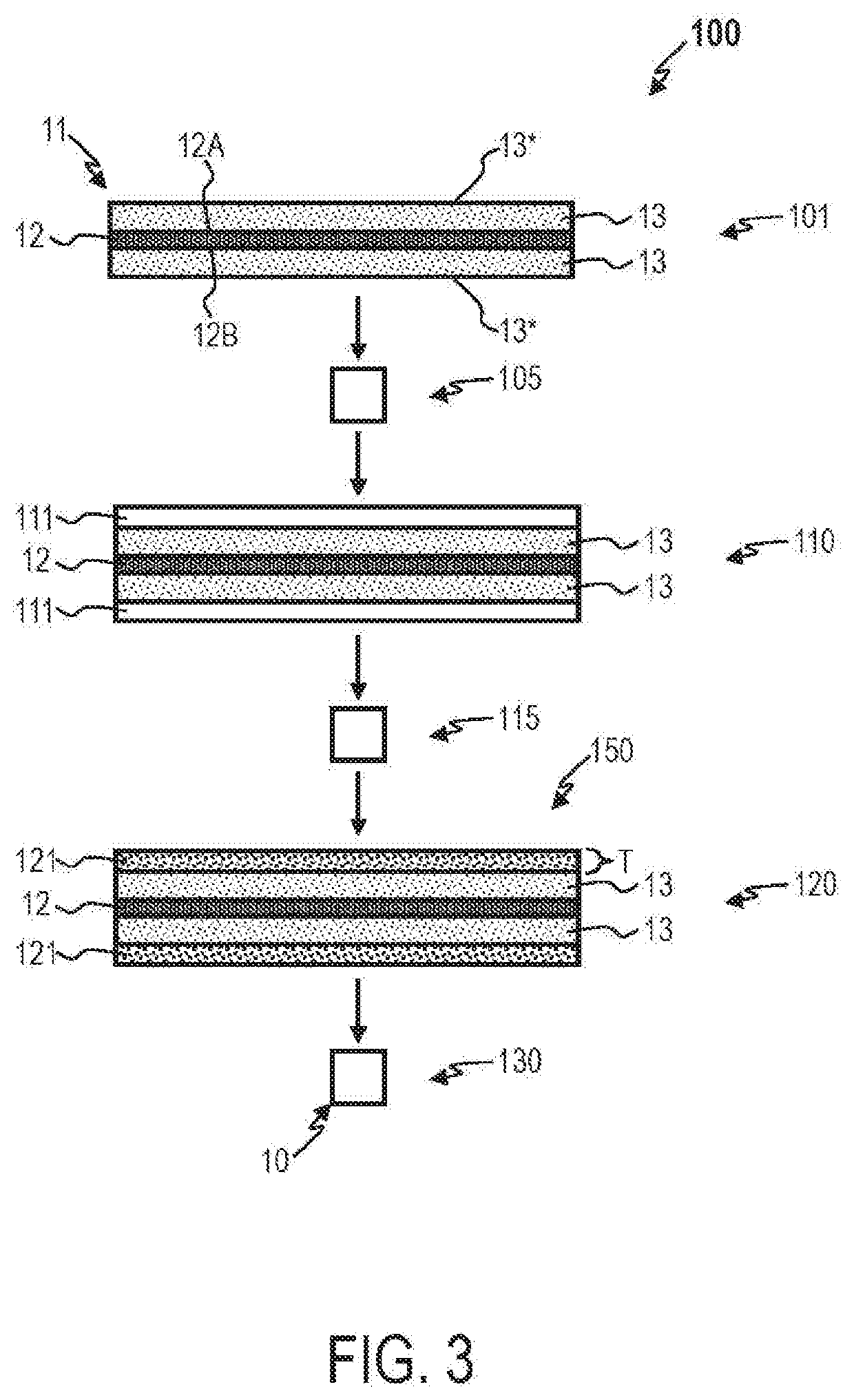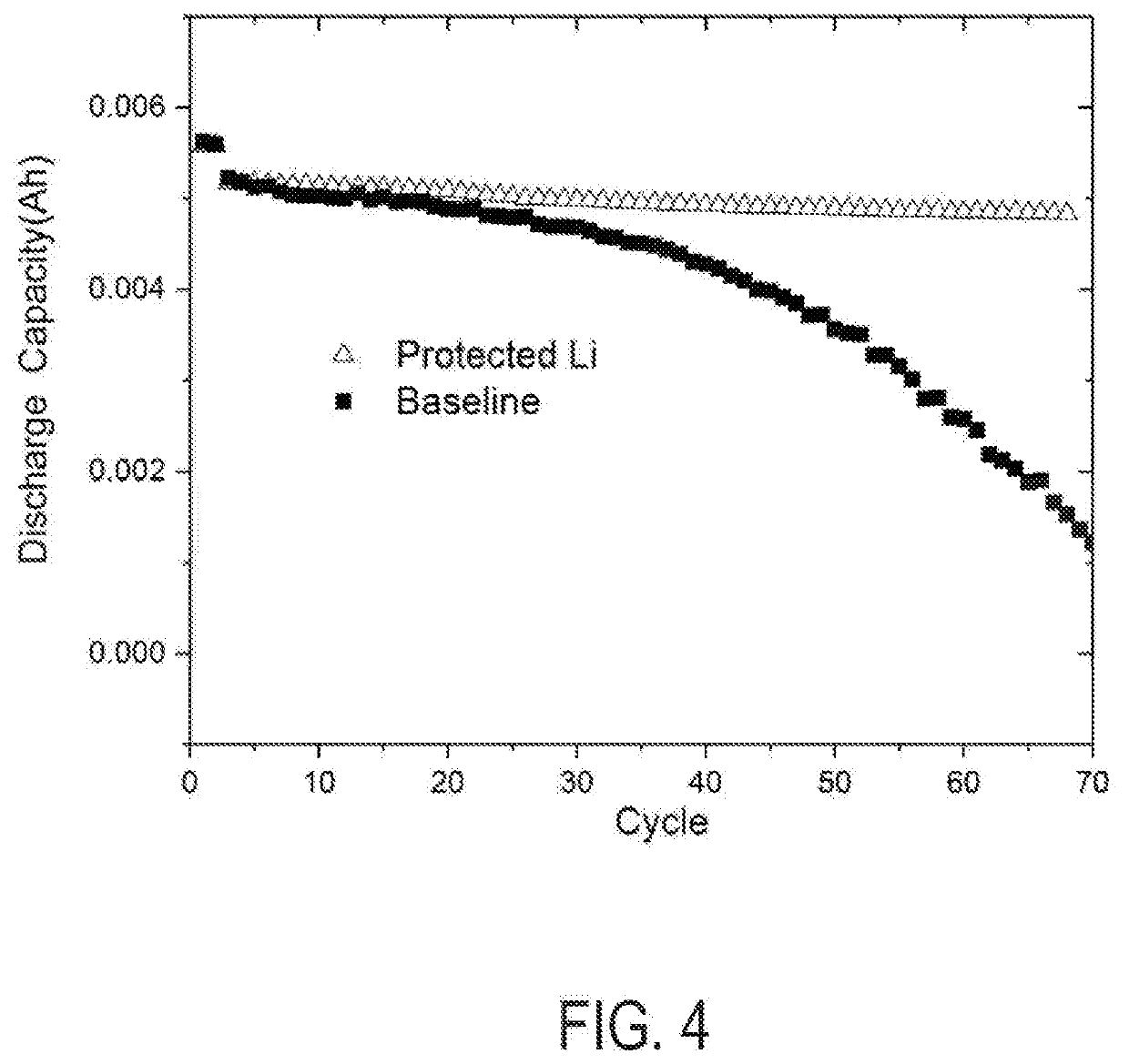Methods for manufacturing electrodes including fluoropolymer-based solid electrolyte interface layers
a technology of solid electrolyte and manufacturing method, applied in the field of rechargeable batteries, can solve the problems of reducing the cycle efficiency and application of such li-ion batteries
- Summary
- Abstract
- Description
- Claims
- Application Information
AI Technical Summary
Benefits of technology
Problems solved by technology
Method used
Image
Examples
example 1
[0034]An anode was made by applying 20 um of pure lithium to a 10 82 m thick copper foil current collector. The anode was disposed in a thermal evaporator chamber. Fluorinated polyethylene (FPE) was cut into pieces of about 2 mm by 1 cm by 1 cm and loaded into tantalum crucibles in the thermal evaporator chamber. The chamber was pumped down from 10 Torr to 3 Torr, and the crucible was heated to 300° C. before coating the lithium with FPE to a thickness of about 1 μm. The anode was subsequently heated treated.
[0035]Two coin cells were assembled in an Ar-filled glovebox: a first coin cell using 13.5 mm anodes as fabricated above and a second coin cell using an identical anode without the FPE coating. The first and second coin cells each used 13 mm diameter Ni0.6Mn0.2Co0.2O2 cathodes and 20 μL of electrolyte comprising ethylmethyl carbonate with 1 M LiPF6. The cells were assembled in an argon filled glove box and cycled using an Arbin battery cycler (BT2000) at room temperature with a ...
PUM
| Property | Measurement | Unit |
|---|---|---|
| wt. % | aaaaa | aaaaa |
| wt. % | aaaaa | aaaaa |
| particle diameters | aaaaa | aaaaa |
Abstract
Description
Claims
Application Information
 Login to View More
Login to View More - R&D
- Intellectual Property
- Life Sciences
- Materials
- Tech Scout
- Unparalleled Data Quality
- Higher Quality Content
- 60% Fewer Hallucinations
Browse by: Latest US Patents, China's latest patents, Technical Efficacy Thesaurus, Application Domain, Technology Topic, Popular Technical Reports.
© 2025 PatSnap. All rights reserved.Legal|Privacy policy|Modern Slavery Act Transparency Statement|Sitemap|About US| Contact US: help@patsnap.com



